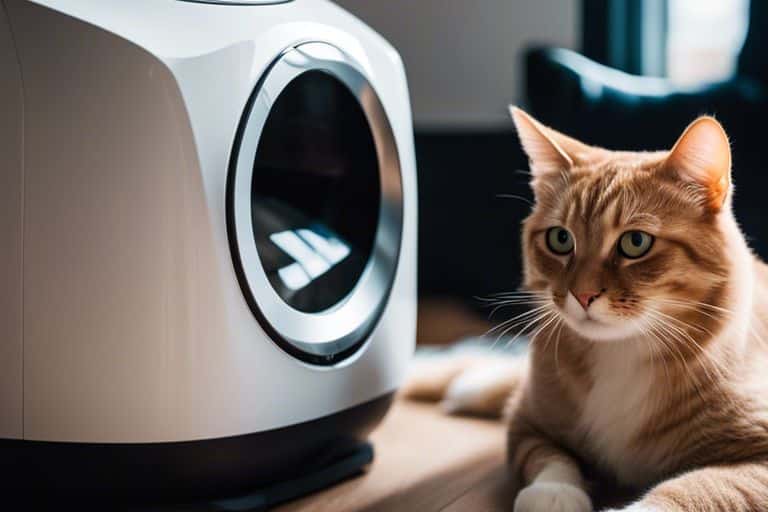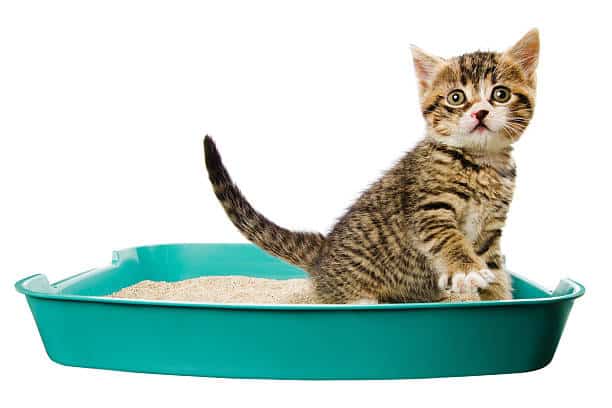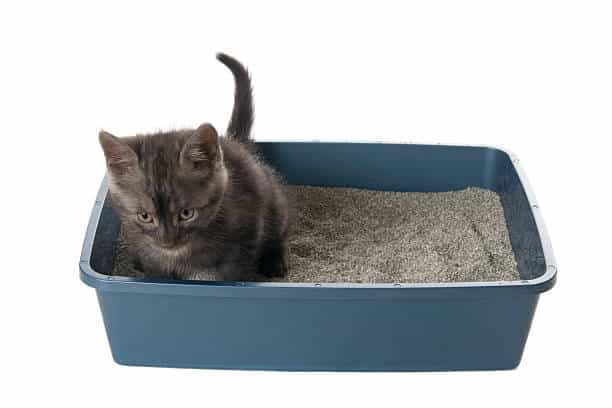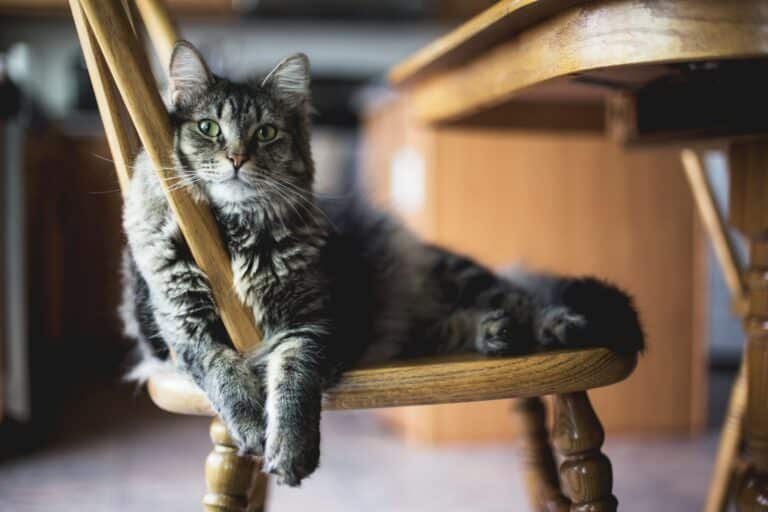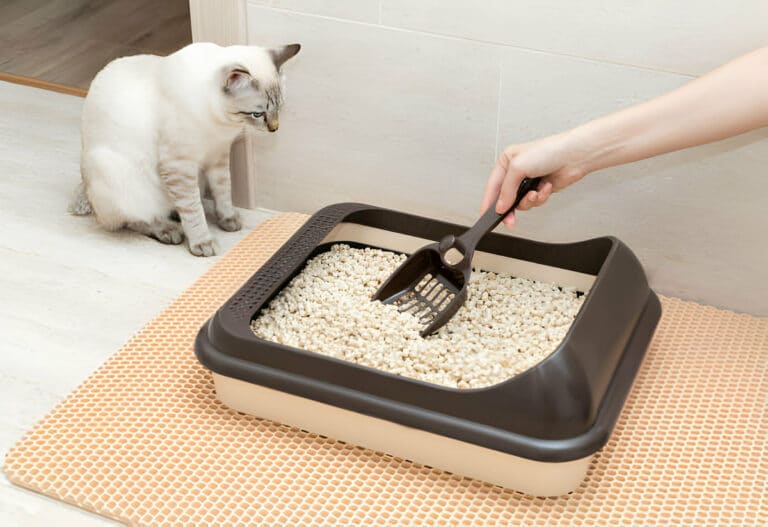Tips & Tricks for Cats Who Stop Using the Litter-Robot
An unwelcome scenario that often perplexes cat owners is when their feline companion decides to abandon the convenience of the Litter-Robot, opting for less desirable locations for their bathroom needs. Fear not, for this tutorial-style blog post is here to guide you through uncovering the reasons behind your cat’s rebellion and equipping you with effective strategies to facilitate a harmonious reunion with the automated litter box.
Delve into the multifaceted approach of addressing medical concerns, alleviating fears, maintaining litter box etiquette, ensuring accessibility, and selecting optimal locations for the Litter-Robot. By implementing desensitization, positive reinforcement, and practicing patience, you can create a purrfectly functioning Litter-Robot experience for your beloved feline friend, leading to a happy and mess-free home environment for all.

Assessing Your Cat’s Litter-Robot Experience
Evaluating Medical Concerns
Now, when your cat starts avoiding the Litter-Robot, it’s crucial to consider potential medical issues that could be causing discomfort or pain. Just as mentioned in the comprehensive guide to reuniting your cat with the Litter-Robot, underlying health concerns such as urinary tract infections, bladder stones, or diabetes can lead to avoidance behaviors. Make sure to consult your veterinarian to rule out any medical issues that may be affecting your cat’s litter box experience.
Recognizing Behavioral Hints
If your cat is displaying aversion towards the Litter-Robot, observe their behavior closely. If you notice your cat avoiding the litter box, eliminating outside the box, or displaying signs of stress or anxiety, it may indicate underlying behavioral issues. Addressing these behavioral hints promptly is imperative to help your cat feel comfortable and confident using their automated litter box once again.
Considering Litter Preferences and Sensitivities
To address potential issues related to litter preferences and sensitivities, it’s imperative to consider the type of litter you are using in the Litter-Robot. As mentioned in the guide to conquering the Litter Box Blues, cats are creatures of habit, and sudden changes in litter type can lead to avoidance behaviors. Ensure that you maintain a consistent, high-quality litter that your cat finds comfortable and appealing to avoid any litter box troubles.

Unraveling the Fear Factor
Identifying Potential Stress Triggers
Fear can be a powerful force behind a cat’s decision to stop using the Litter-Robot. Changes in the cleaning cycle sound, malfunctioning sensors, or even a loud noise can create anxiety and aversion. It’s crucial to identify these stress triggers to address them effectively.
Strategies for Desensitization
You can help your cat overcome their fear by implementing gradual desensitization techniques. This involves reintroducing the Litter-Robot slowly by leaving treats near the entrance, using calming pheromones, and offering praise when they approach it. Consistency and positive reinforcement are key to easing your cat’s anxiety.
Understanding your cat’s behavior and reactions to the Litter-Robot is vital in developing effective desensitization strategies. By observing their actions and responses, you can tailor your approach to suit their needs and gradually build their confidence in using the automated litter box.
Creating a Calm and Inviting Environment
You play a crucial role in creating a calm and inviting environment around the Litter-Robot. By ensuring that the area is quiet, maintaining a consistent and comfortable litter type, and providing privacy, you can help alleviate your cat’s anxiety and encourage them to use the litter box again.
Calm and inviting surroundings will go a long way in helping your cat feel comfortable and secure while using the Litter-Robot. By making small adjustments to the environment and providing reassurance, you can support your feline friend in overcoming their fears and returning to their automated litter box.
The Importance of Consistent Litter Management
Choosing the Right Litter Type
On the quest to reunite your cat with the Litter-Robot, selecting the appropriate litter type is crucial. Cats are notoriously picky creatures when it comes to their bathroom habits, so choosing a litter that your feline friend finds comfortable and familiar can make a significant difference. Consider the texture, scent, and clumping ability of the litter to match your cat’s preferences and encourage consistent use of the automated system.
Maintaining Cleanliness and Routine
While addressing your cat’s reluctance to use the Litter-Robot, maintaining cleanliness and a consistent routine is paramount. Cats are naturally clean animals and may avoid a dirty or malodorous litter box. Regularly cleaning the Litter-Robot and ensuring a sanitary environment can help entice your cat back to their high-tech throne. Bear in mind, a clean litter box is a happy litter box.
The consistency in litter management can significantly impact your cat’s willingness to use the Litter-Robot regularly. Once again, choosing the right litter type that your cat prefers, maintaining cleanliness and routine, and adjusting to their specific cleaning preferences can make all the difference in successfully reintroducing them to their automated litter system.
Adjusting to Your Cat’s Cleaning Preferences
Choosing the Litter-Robot was a step towards convenience, but it’s important to also consider your cat’s specific cleaning preferences. Some cats may prefer a certain level of litter depth, while others may have a preference for the frequency of cleaning cycles. By observing and adjusting to your cat’s preferences, you can create a more comfortable and enticing environment within the Litter-Robot, increasing the likelihood of regular use.

Tweaking the Litter-Robot Accessibility
Assessing Entry and Exit Challenges
Your cat’s comfort with the Litter-Robot hinges on its accessibility. Factors like step height and ease of entry and exit play a crucial role in their willingness to use it. If you notice your cat struggling or avoiding the Litter-Robot, consider adjusting the setup to address these challenges.
Addressing Mobility Issues with Modifications
An vital aspect of ensuring your cat’s comfort with the Litter-Robot is addressing any mobility issues they may face. As cats age, they might encounter difficulties navigating the automated litter box. Making modifications such as adding ramps or platforms can greatly enhance their ability to comfortably enter and exit the unit, promoting a positive experience.
Another aspect to consider when addressing mobility issues is the size of the entryway. Ensuring that the opening is wide enough for your cat to comfortably enter and exit can make a significant difference in their willingness to use the Litter-Robot regularly.
Implementing Supportive Accessories for Comfort
Assessing your cat’s comfort level and making necessary adjustments with supportive accessories can make a world of difference in their acceptance of the Litter-Robot. Items such as ramps, platforms, or even a cozy mat near the unit can create a more inviting environment, encouraging your cat to use it with ease.
Supportive accessories aim to enhance your cat’s overall experience with the Litter-Robot, promoting a stress-free and comfortable environment that facilitates their return to using the automated litter box efficiently.
Perfect Placement of the Litter-Robot
Understanding the Importance of Location
Many factors can influence your cat’s comfort level when it comes to using the Litter-Robot, and one crucial aspect is the placement of the device in your home. The location of the Litter-Robot can significantly impact your cat’s willingness to use it, so it’s imperative to choose the right spot.
Avoiding High-Traffic and Exposed Areas
The placement of the Litter-Robot plays a crucial role in your cat’s acceptance of this automated litter solution. Avoid placing it in high-traffic areas or locations where your cat might feel exposed. Cats prefer privacy and quiet when using the litter box, so selecting a secluded spot can encourage them to use the Litter-Robot regularly.
Seeking the Ideal Spot for Privacy and Accessibility
Clearly, ensuring that the Litter-Robot is placed in an area that provides privacy and easy accessibility is key to your cat’s comfort and willingness to use the device. Exposed locations or those with high foot traffic can deter cats from using the litter box, leading to accidents elsewhere in the home. By selecting a quiet, easily accessible corner, you can create an ideal spot for your cat to feel at ease while using the Litter-Robot.
Building Trust Around the Litter-Robot
Keep in mind that building trust between your cat and the Litter-Robot is crucial for a successful reunion. Cats are creatures of habit, and any changes to their environment, especially their litter box, can lead to avoidance behavior.
Unlike traditional litter boxes, the Litter-Robot introduces multiple variables that can influence your cat’s comfort level. Issues such as medical concerns, fear-inducing changes in the Litter-Robot’s operation, litter box etiquette, accessibility, and even the location of the Litter-Robot can all play a role in your cat’s avoidance behavior.
When trying to rebuild trust, consider desensitization and positive reinforcement methods. Gradually reintroduce your cat to the Litter-Robot by leaving treats near the entrance, creating a calming atmosphere with pheromones, and offering praise when they interact with the device.
Maintaining a consistent, high-quality litter type within the Litter-Robot is key to restoring your cat’s trust in the device. Regular cleaning cycles are also crucial to ensure a clean and inviting environment for your feline friend.
Bear in mind, patience is paramount. Building trust and comfort around the Litter-Robot takes time and consistent effort. By addressing the underlying causes of your cat’s avoidance behavior and providing positive reinforcement, you can increase the likelihood of a successful reunion with the automated litter box.

